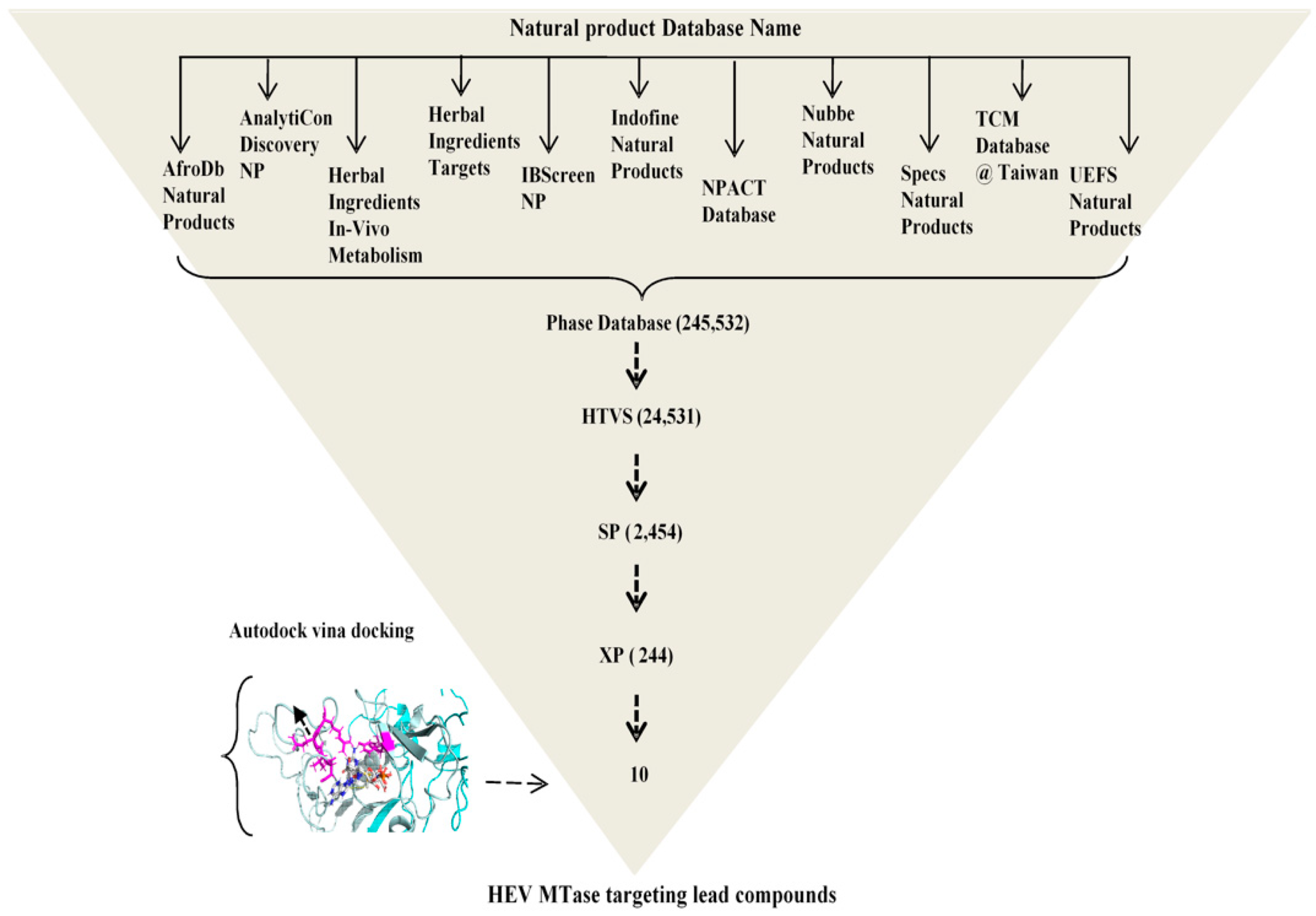HEV has been recognized with eight genotypes (HEV1- HEV8), of which HEV1-HEV4 are infectious to humans. While HEV1 is waterborne infection causing self-limiting acute hepatitis E in general population, HEV3 is zoonotic and foodborne which takes a chronic course in immunocompromised individuals. So far, peg-IFNα-2a and ribavirin are the only effective regimen of choice for acute hepatic failure and chronic infection. However, though ribavirin induces a sustained virologic response, severe side effects and emergence of drug-resistant HEV mutants in a proportion of patients restricts its use. Therefore, designing of direct-acting or host-targeting anti-HEV agents and identifying the alternative treatment modules are highly needed.
The HEV genomic RNA encodes its largest gene (ORF1) into a nonstructural polyprotein (pORF1) consisting of methyltransferase (MTase) and other six domains, essential for virus replication. However, it still remains debatable whether pORF1 functions as a multi-functional polyprotein or gets processed into individually active small proteins [1].
A collaborative work of Prof. Mohammad K Parvez (King Saud University, Riyadh, Saudi Arabia) and Prof. Deepak Sehgal (Shiv Nadar University, Greater Noida, India) has explored antiviral targeting of HEV methyltransferase. They adopted the strategy of homology modelling of the in vitro expressed HEV1-MTase [2] to screen and identify potential inhibitory molecules through virtual screening (MDS) and their validation using cell-free enzymatic assay and replicon-cell culture system. To further confirm the selected top ten molecules’ efficacies, the inhibition of HEV3 replication was validated using luciferase assay, qPCR, Immunofluorescence, and Western blot. Finally, a lead molecule 3-(4-Hydroxyphenyl)propionic acid (HPPA) was selected which showed strong interaction and binding with HEV-MTase, and potentially inhibited virus replication in cellulo.
Hence, this study would help developing new inhibitors or drug-like molecules against HEV. Since the homology between human and HEV MTase is significantly less, it is unlikely that HPPA may affect the host MTase. Nonetheless, the pharmacodynamic testing of HPPA in available animal models and pre-clinical trials would be required to further evaluate its efficacy as a novel anti-HEV drug.
Read the full article recently published in Viruses (Basel) 2022 14(8), 1778;(https://www.mdpi.com/1777318).
References
- Parvez MK. The hepatitis E virus nonstructural polyprotein. Future Microbiol. 2017;12:915-924.
- Hooda P, Ishtikhar M, Saraswat S, Bhatia P, Mishra D, Trivedi A, Kulandaisamy R, Aggarwal S, Munde M, Ali N, AlAsmari AF, Rauf MA, Inampudi KK, Sehgal D. Biochemical and Biophysical Characterisation of the Hepatitis E Virus Guanine-7-Methyltransferase. Molecules. 2022; 27:1505.

